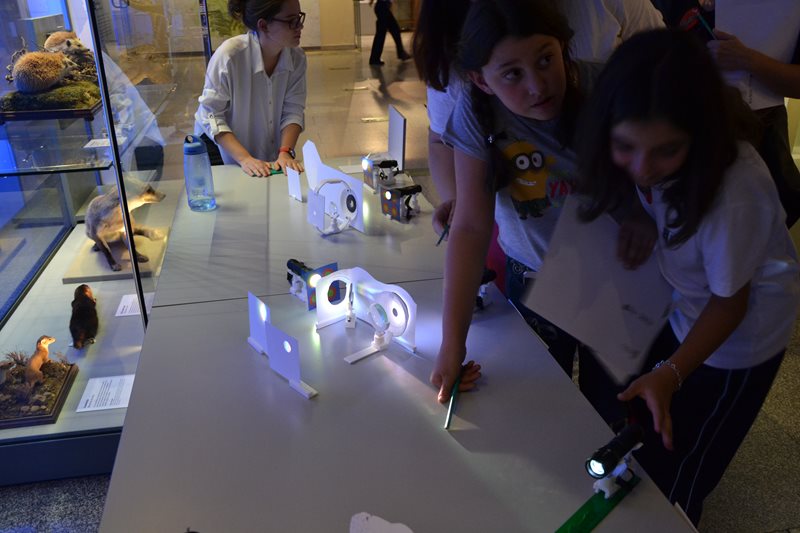The Escaping Room
Instituto de Óptica-CSIC Student Chapter
Instituto de Óptica-CSIC Student Chapter’s big activity this year was a new outreach workshop called “OPTICS IN THE WORLD”, which we designed and executed thanks to the OSA Centennial Special Events Grant. This was an outreach workshop consisting of a number of educational workshops and displays based in optics technology, as well as a recreational/learning activity called The Escaping Room.

For workshops, we designed a series of optics-based workshops that focused on the presence of optical phenomena in nature. One of the workshops was focused on animal vision, explaining concepts about refraction, reflection, and lenses using different animal eye models that we designed. Another workshop was focused on fluorescence and phosphorescence, and its presence in animals and plants. The last workshop was focused on iridescence and other optical phenomena.
The Escaping Room is an activity where participants had to solve a series of optics-based puzzles in order to exit. These included: using different combinations of lenses to form a telescope that would allow them to read a word that was at a fixed distance; using a fiber in order to transmit an audio message to a speaker; finding a word displayed on infrared LEDs; finding a message in ‘invisible ink’, and crossing a laser-based security system without activating its alarms. The activity was done twice; the first time we joined Madrid’s Museum of Natural Sciences, where the activity was held, and the second time we joined forces with Madrid’s ‘Week of Science’ program, and held the activity at our research institute. Collaborations with these two institutions allowed us to have many more attendees than usual. They also dealt with a lot of the logistics, freeing us to dedicate more time to optics. This is one of the most challenging activities that our chapter has done in a long time, because it involved designing and assembling many workshops from scratch. All of the members of the chapter were involved in designing the three workshops as well as the individual trials in the Escaping Room, as well as in presenting the workshops and/or aiding the participants. One of the biggest challenges was designing workshops and activities that would work with a large number of attendees. This time we had to design and organize the activities in such a way that groups of 10-15 could be engaged simultaneously at each workshop. This required having more displays and more interaction between attendees and student chapter members who were presenting.
Both sessions were a success. The first session, at the Museum, had higher attendance and volume, and was the more challenging of the two. By the second session, we all felt like seasoned experts! We are thankful to the OSA for funding this activity. We believe that these kind of outreach activities are great for children, who get to learn concepts in a way they’ll be likely to remember. This is especially important in Spain, where we need more people to be interested in learning about these subjects and hopefully deciding on a scientific career in the future. We’re also thankful to the community of Madrid for their support of Week of Science and our activity.
